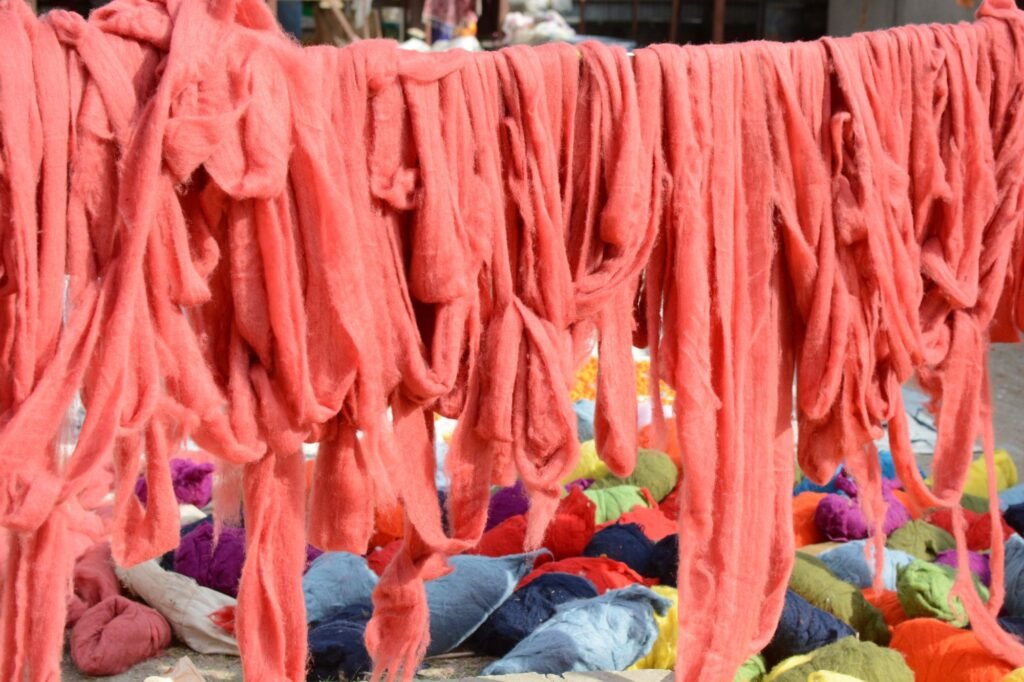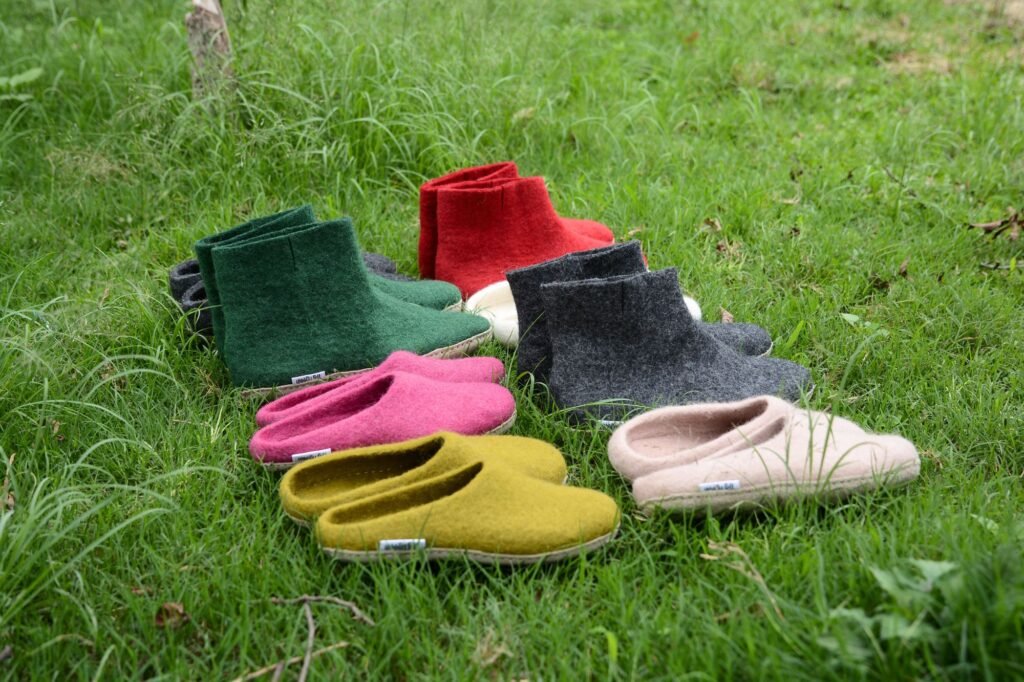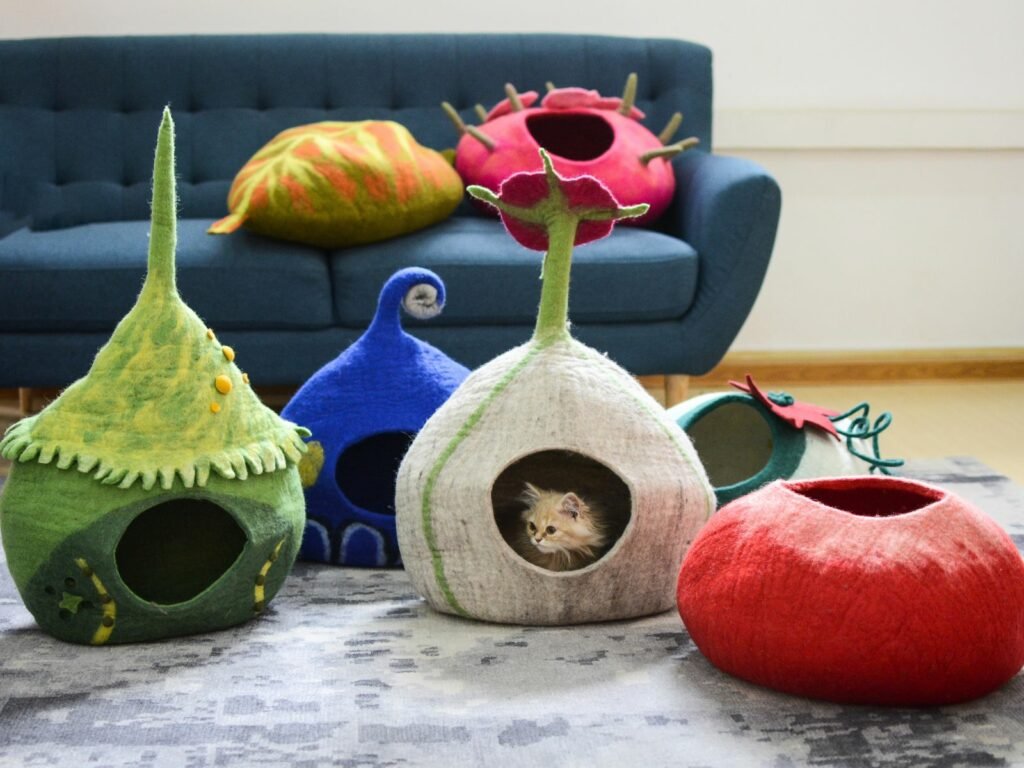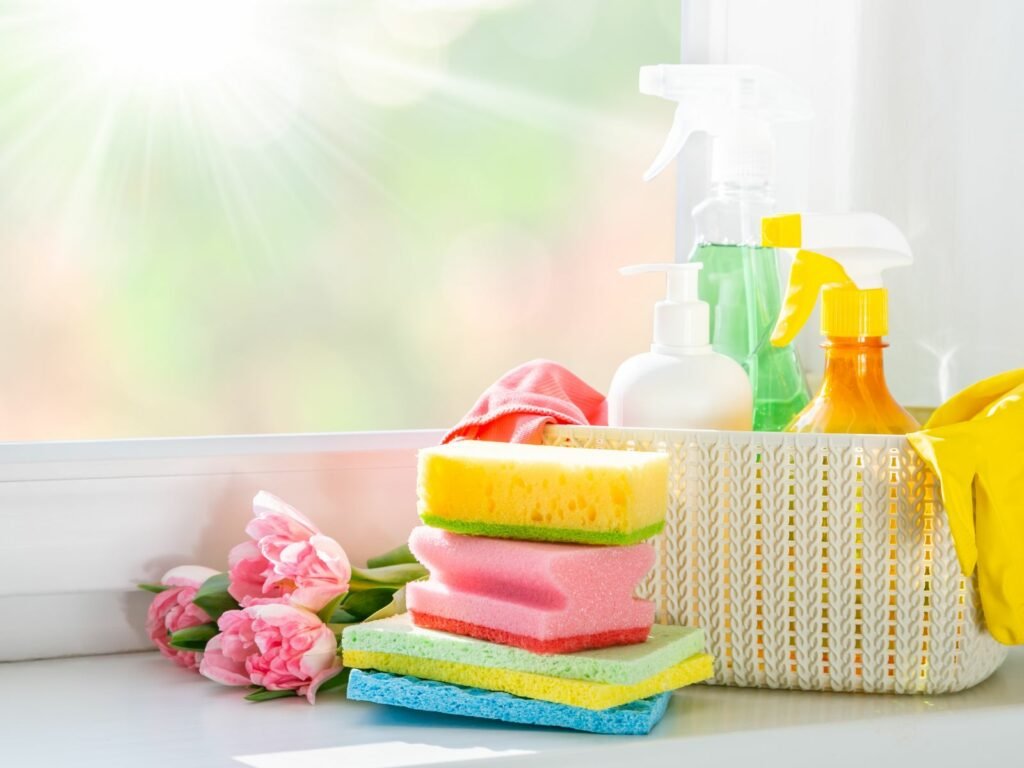Woolen products not only provide warmth and comfort but also hold sentimental value, especially when they are hand-knitted by loved ones. Wearing a cozy sweater or scarf crafted by your grandmother during the winter months creates a special bond, with memories interwoven within the fabric. Naturally, you’d want those memories, the presence of your loved ones, and that comforting warmth to endure for decades.
If you’ve ever noticed, woolen sweaters tend to outlast cotton shirts. The longevity of wool is often superior to other fabrics like cotton or polyester. With proper care, high-quality woolen products can be reused for decades.
But how long can you expect your woolen items to last? The durability of a wool product depends on various factors, including its nature, quality, and how it is used. Understanding the characteristics of wool is key to understanding its lifespan. So, let’s delve into the features that contribute to the longevity of wool and discover how you can make your woolen garments last longer.
How Long Do Wool Products Last?
You might have observed yourself, generally, your woolen sweater remains longer than your cotton shirt. Isn’t it? Wools mostly have a longer life than other fabrics like cotton or polyester. You can reuse woolen products of good quality for decades if you take good care of them.
Well, how long the product last would totally depend on the nature and quality of the products and also upon how you use it. Knowing the feature of wool would help you know about the life of wool. So, let’s jump on those features that would make your wool last longer.
What Makes Wool Long-lasting?
There are numerous factors that make wool a lasting choice revealing the remarkable resilience and unique characteristics that set it apart from other fabrics, allowing your woolen products to endure for years with proper care.
Flexibility
One remarkable quality of wool is its exceptional flexibility. Wool fibers possess a unique ability to bend approximately 20,000 times before breaking, setting it apart from fabrics like cotton which break seven times faster. This inherent flexibility not only contributes to the durability of woolen products but also allows them to retain their shape even after extended use.
Unlike other materials that may lose their form over time, wool has the remarkable capacity to regain its original shape, ensuring that your woolen garments continue to look great for an extended period. The flexibility of wool fibers enables them to withstand regular wear and tear, making them ideal for long-lasting, resilient clothing.
Fire Resistance
Wool’s natural fire resistance is another notable characteristic that enhances its longevity. Composed of keratin protein, wool is inherently flame resistant and requires a high temperature of approximately 570°C to 600°C to ignite. Even if it does catch fire, wool does not easily propagate the flame and has a tendency to self-extinguish. Additionally, wool does not melt like some synthetic fabrics.
This remarkable property not only provides a safety advantage but also contributes to the prolonged lifespan of woolen products. While you should always exercise caution and avoid exposing wool to open flames, the inherent fire resistance of wool ensures that your favorite woolen garments are better protected from accidental ignition, giving you peace of mind while enjoying their warmth and comfort.
Stain Resistance
Stain resistance is another advantage of woolen products. Wool fibers possess a natural protective layer, consisting of a waxy coating that makes it difficult for spills to be readily absorbed into the fabric, thus reducing the likelihood of stubborn stains. This unique characteristic allows you to easily wash and remove any dirty spots from your woolen clothes, ensuring they remain clean, fresh, and ready to be flaunted.
Unlike some fabrics that easily retain stains, wool offers greater resistance and maintains its appearance even after multiple wears. With proper care and cleaning, you can enjoy the beauty of your woolen garments for an extended period without worrying about unsightly stains tarnishing their aesthetic appeal.
Reusability
You do not have to throw the woollies once you have worn them, they are perfectly reusable. You can wash them if they get dirty and wear them many times.
Thus, having a long-lasting life, your wool can come to your use many times. Further, the garments made up of natural wools are easy to dispose of too once fully used as they are biodegradable and eco-friendly.
While wools may last for a longer time, there are still a few elements that may ruin your woolies. Here we are writing about some factors you must be careful of.
Factors that may ruin your wools
If you want to safeguard your beloved woolens from potential damage, it’s crucial to be aware of the factors that can compromise their quality and take appropriate measures to protect them
Pests
Woolen garments are prone to damage from pests, particularly moths and carpet beetles. These insects are attracted to the protein fibers present in wool and can cause unsightly holes in your favorite woolen clothes. To protect your woolens from pests, ensure proper storage by keeping them in clean and airtight containers or using breathable cotton bags. You can also use natural repellents like lavender sachets or cedar chips to deter insects.
Direct Exposure to Sunlight
Woolen fabrics can be sensitive to prolonged exposure to direct sunlight. The UV rays in sunlight can fade the vibrant colors of wool and even deteriorate the fabric over time. To preserve the color and quality of your woolens, avoid drying them in direct sunlight and opt for shaded or indoor drying areas. This will help maintain the original vibrance and prolong the life of your woolen garments.
Moisture
While wool can absorb moisture without sustaining damage, excessive moisture can be detrimental to its longevity. Wet wool is more fragile and prone to stretching and losing its shape. Avoid leaving wet woolen clothes hanging for extended periods, as this can lead to distortion and stretching. Properly dry your woolens by laying them flat on a clean surface, and avoid storing them in damp or humid environments to prevent mold or mildew growth.
Cleaning Mistakes
Cleaning woolen fabrics requires special care. Avoid washing wool in hot water, as it can cause shrinkage and distortion. Similarly, using bleach or harsh chemicals can damage the wool fibers and cause irreversible yellowing. Follow the care instructions on the garment’s label and use mild wool detergents specifically formulated for woolen products. Gentle handwashing or using delicate cycles in washing machines designed for wool can help maintain the integrity of your woolens.
Storing Mistakes
Improper storage can also affect the condition of your woolen garments. Avoid storing woolens in direct sunlight, as it can fade the colors and degrade the fabric. Opt for clean, dry, and dark storage areas that maintain consistent temperature and humidity levels. Folding woolen items instead of hanging them can prevent stretching and deformation. Additionally, protect your woolens from pests by storing them in airtight containers or using natural pest-repellent products.
Ways to Extend Wool’s Life
In order to ensure your wool stays in pristine condition and withstands the test of time, employing a few simple strategies can significantly extend its life, allowing you to enjoy its cozy embrace season after season.
Tips for Repelling Pests
Since pests and insects could do serious damage to your wool, it is necessary to store it properly. You better not keep your woolen products in open spaces prone to pest attacks. Keeping them in a clean space away from the sunlight in an airtight and secure container is better.
The way to repel pests and insects could be using lavender scents or putting some dried lavender in your closets. It contains non-toxic compounds called linalool, which helps to repel the pests. Similarly, you can also store the products in breathable cotton bags. Using the cedar hanger (preferably for lightweight wools) or spreading the cedar chip around the wool textile also could be a better alternative.
This way, you may adopt certain preventive tips to safeguard your wool while storing them. In the worst scenario, you can use pest-repellent products which you would easily find in your local stores.
Washing Tips
Washing wools are very delicate fabrics when it comes to washing. Simply washing it in hot water or using harsh detergent may deform its original shape and color. You must use wool detergent and lukewarm water to protect your wool.
Wools are best washed with hands. Washing them in the harsh cycle in a washing machine may again deform them. Still, there are some delicate cycles in advanced washing machines, which could also be safe for wool to be washed on machines.
Here we give you some stepwise tips for washing your woolen garments by hand and on the machine.
Hand washing tips
- Fill the basin or sink with lukewarm water (approx. 30°C) and put some wool detergent on it.
- Better turn the garment inside out, submerge it into the detergent water, and allow the fabric to soak in the detergent for at least 10 minutes. Remember not to rub the fiber, and you can swish it around.
- Simple gently scrub in the place which may be more tainted.
- Rinse the garments twice or thrice until the soapy residue is washed off.
- Gently press the woolen garments to remove the excess water from them. Remember not to wring them or squeeze them harshly. You may remove excess moisture also be rolling them in a dry towel.
- Do not hang the garments while in the process of drying, as they may stretch out. Instead, lay the wool items flat and evenly spread on a clean and flat surface.
- Also, avoid dying them in direct sunlight. Instead, let air dry in the shade.
Tips for washing in the machine
- First, turn the woolen garments inside out and put them into your washing machine.
- Set the washing machine on a delicate cycle. You can also choose a wool or hand wash cycle as available in your washing machine settings.
- Add the mild wool detergent and also choose the setting to wash the garments in cold water
- Add the extra rinse setting before turning the cycle on.
- After completing the cycle, do not put the woolen clothing in the dryers and avoid hanging it. Instead, lay them flat to avoid stretching.
This way, when you wash your wool, it will definitely be in the proper shape, enhanced color, and will have a longer life.
Storing tips
Wools are susceptible to damage due to extreme heat, moisture, and pest or insects. Carefully washing and keeping the wool in inappropriate places may still ruin your fabric. The proper storing technique is mandatory for keeping the woolen garments in good condition.
The storage area must be clean, dry, dark, and cool. It must be free from dust. Further, there should not be an extreme change in moisture and humidity in the storage area. The woolen products should not get direct sunlight where it is placed as it can damage the woolen products.
It is advisable to store the woolen clothes by folding them rather than placing them on hangers. It is because woolen clothes are heavy and can be stretched out when hung for a long period of time.
You can also store your woolens in a safe and airtight container. This way, you would safeguard it also from pests and insects.
Finally
In conclusion, wool is a reliable companion during cold temperatures, offering a cozy warmth and timeless style. Ensuring your woolen belongings’ longevity depends on their initial quality and how you care for them.
By employing proper washing and storing techniques, you can effectively preserve the youthful vitality of your wool, allowing it to accompany you for many seasons. Embrace wool’s enduring beauty and functionality by extending its lifespan through attentive maintenance.








